This essay contributed by Tom Snyder, Seneca Park Zoo’s Director of Programming and Conservation Action, first appeared in our January 2024 edition of ZooNooz.
Growing up surrounded by nature I was fascinated by the wildlife in forests, and dreamed of exploring remote, uncharted territories. The thrill of discovering the unknown captivates me to this day, and I’m lucky to have a job that includes such ventures, always with an eye to conservation of biodiversity. The role zoos play in conservation, is significant. Zoos accredited by the Association of Zoos and Aquariums are at the forefront of global conservation efforts, with projects in 119 countries and $250 million invested in 2022. Seneca Park Zoo has played a leadership role in conservation efforts in several arenas, but perhaps most evident is our nearly thirty-year support of the work of Dr. Patricia Wright in Madagascar.
The Zoo has supported a wide range of important conservation projects over the years. Our support of the field station at Centre Valbio has helped employ hundreds of local people supporting thousands of researchers over the years. We have helped build forests, not only around Ranomafana, but started nurseries in other regions of the country. The complexity of balancing the needs of conservation with the realities of local communities and ecosystems is a constant learning process.
Rochester Institute of Technology (RIT) is a key partner for Seneca Park Zoo in many aspects of our conservation work, including bringing their expertise and technologies to the rainforests of Madagascar to use real world applications of remote sensing and imaging. During one research trip in 2019, we deployed audiomoths, sophisticated open-source audio recorders in the jungle near Centre Valbio, the field station in Ranomafana National Park. Analysis of the audio allows us to determine what is living where in the rainforest – insects and amphibians we cannot see but can be heard using these sensitive tools.
Dr. Wright immediately understood the value and implications of such recordings, and late last summer, she contacted us and asked for help deploying audiomoths in the “Lost Rainforest” of Ivohoribe, Madagascar. It was an opportunity to be part of the first large-scale research expeditions, and would include both the
Zoo and RIT.
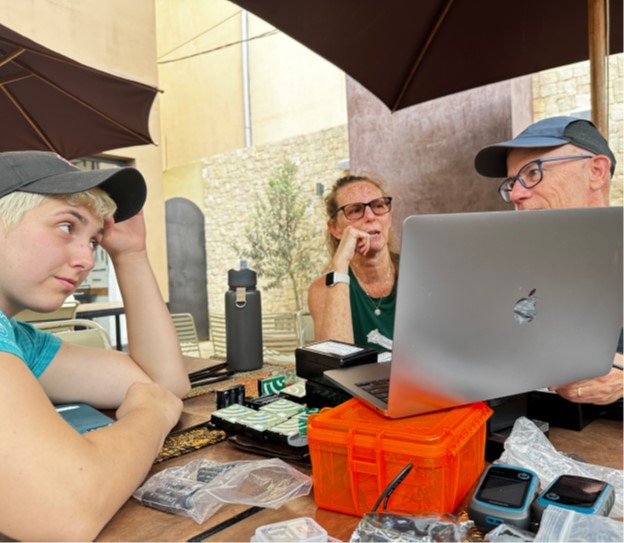
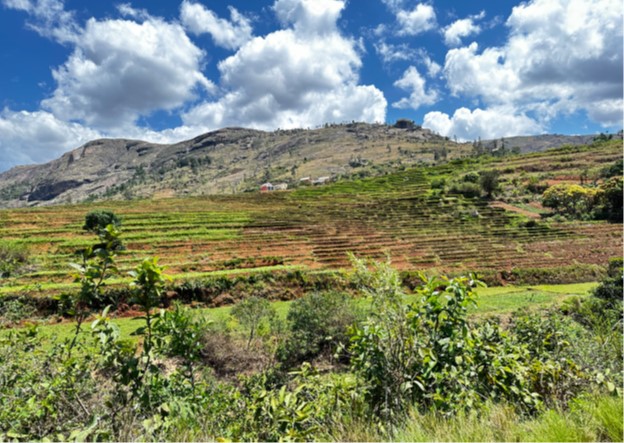
The Lost Rainforest was “discovered” by Dr. Wright in 2016, and is a relatively small, isolated forest among grazing land, with much of the surround vegetation regularly set on fire for zebu (cattle) grazing. Her preliminary scouting trips had already provided evidence of species that biologically did not make sense occupying this space. For more context, this Smithsonian article provides a brilliant background (scan QR code to the right).
As I write this, I’ve only been back in town for a couple weeks, and there’s much to learn and share in the coming days. For now, here’s a bit of a travelogue of the journey to the Lost Rainforest.
Planning for this trip was complex given the remote location. Twenty hours in the air and twenty hours on the ground are required before a three-hour hike. Our team included Brenna DeAngelis, Seneca Park Zoo zookeeper, and Tony Vodacek, Professor, Chester F. Carlson Center for Imaging Science at RIT, and his wife Anne. The full expedition team included specialists in various fields, from frogs to birds to bats, and even a film crew, documenting the expedition.
The arduous ground travel allows glimpses of diverse landscapes and the socioeconomic challenges of the country. The landscape is a mix of terraced rice patties interspersed with small communities of brick or mud houses, between some larger cities like Antsirabe and Fianarantsoa. Whether you live in a remote area or on the outskirts of a city, the roads are in terrible shape, with National Routes having crater-sized holes in them or areas with no pavement at all.
Day One in country: Our first day of travel, we logged more than 13 hours, arriving in Fianarantsoa for a quick overnight before another full day in the truck. Day two took us to the town of Ihosy, passing through areas with sparse populations of cattle grazers and fewer agricultural plots. With cattle grazers, come fires, burning land to get renewed growth for grazing. The magnitude of land turned into burned plots and active fires was significant. At times, driving with an open window, the heat of the fire would rush into the vehicle as you pass.
The last leg of the trip to the Ivohiboro forest is about three hours long. We can see clouds in the distance that appear to touch the ground, but we are driving through an open savannah with dried grasses contrasted with bushes loaded with bright purple flowers. The flowers are a sign that the rainy season is starting, and the clouds at ground level far off are a sign we may be in for some rain.
As we get closer to the ground clouds, we can see them roll off a set of trees in the distance. This is the Ivohiboro forest, which Pat refers to as The Lost Forest. After another hour, we pull up to the Ivohiboro ranger station, a plain white block building with a Madagascar flag whipping in the wind. It is also almost sunset so we cannot quite tell what tomorrow will bring, but it already looks demanding. The inside of the ranger station is sparse, with only the essentials; two bedrooms, a couch, a few chairs, a dining table, a serviceable kitchen, and plenty of pads to throw on the ground for people to sleep on. Our first night is on the floor of the ranger station.
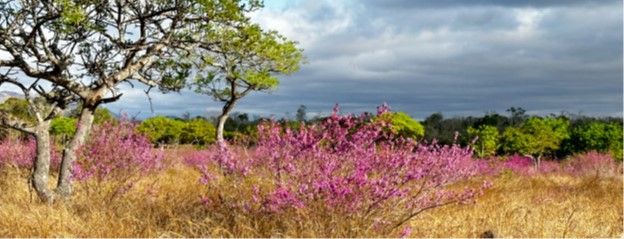
Day Three: In the morning we awake to a group of Malagasy locals waiting outside the ranger station. They are our porters. Men, women, and young locals will carry our bags up to the North Camp. The forest is divided into two sections, north and south. The north is where we will be. There are two groups of researchers/scientists that are working in both areas.
Our packs are laden with gear and gadgets, including camping supplies and food. We have rain clothes, sleeping bags, animal ID books, batteries, and chargers. The locals carry them with ease up the mountain side as we lag, walking between a sea of grasses on a narrow and uneven foot paths. The trail cuts back and forth across the incline, slightly decreasing the harshness of the climb. Behind us, an incredible vista of mountains and the savanna we crossed to get here fill our views.
The climb continues up and down as we weave our way towards the clouds. As we crest the final hill we can see the North Camp in the distance, sitting on the edge of the rainforest. Tents are placed along the forest edge with three small rustic shelters housing tents and a communal space. As we arrive, we are greeted by colleagues that have been working hard over the last two weeks documenting the species found in the forest.
We meet a host of scientists from all over the world, including Malagasy staff workers from Centre Valbio. Shortly after, a film crew comes walking up the trail with Pat Wright slowly making her way out of the jungle. She pauses at the top of the stairs and exclaims to everyone, “We saw them!” She is talking about a group of ring-tailed lemurs. This is a lemur species normally only found in the spiny forests of Madagascar, now hundreds of miles away from where it is supposed to be, living in a wet rainforest environment where they should not be. What are they doing here? Did they run from the forest fires that have plagued this area, like many others in Madagascar?
Once we had made camp and set up our tents, we introduced ourselves to everyone and prepared for our first foray into the jungle. From camp, there is a set of steep stairs adjacent to the shelters that went down to the river. There, Centre Valbio cook staff and other Malagasy helpers camped. We had a makeshift shower, and a PVC tube directed water out of the river to assist us in getting drinking water.
With four of us on our team, three went to set up our audiomoths, and I headed out to begin recording 360º videos. We brought 19 audiomoths in total. These are open-source audio recording devices that can record low, regular, and high frequency audio with three batteries and an SD card. We have a very simple deployment where they are programmed, placed in a Ziploc bag, and attached to a tree or other structure. Depending on the programming, they can record for certain periods, frequencies, and turn on and off at certain times. We are looking to identify what is in the forest, so we are continuously recording the full spectrum of frequencies and about 17 GB of data for every 24 hours of recording from each device.
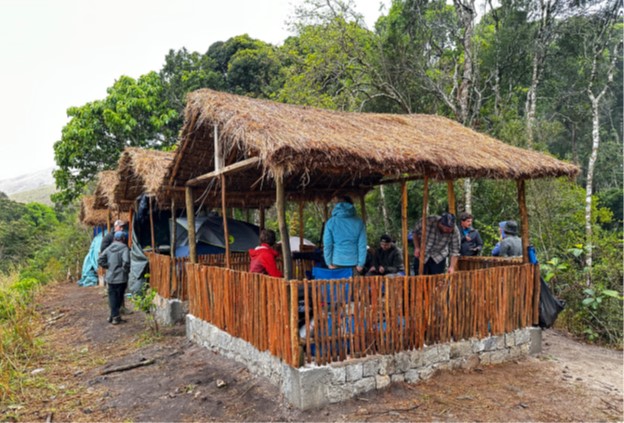
As I started recording, I watched the others head into forest. Almost immediately I heard the lemurs making alert calls. Within two minutes of entering the jungle they had seen a group of ring-tailed lemurs. After several minutes of recording from the knoll, I headed up to the same entrance the others used. I proceeded to place the camera at various locations, hitting record, then walking back out of frame so we would at least have some documentation of the sights and sounds of the southern part of the North Forest.
Day Four: The film crew wanted to get footage of Tony working in the field deploying/checking audiomoths, and I took the 360º camera and hiked up the side of the hill to interview Pat and see if we could get some good
360º video footage of the area. We slowly hiked up the footrail towards the ranger station. Where the trail crests we set up the camera. It provided a view across the vista with two small villages in two directions. Behind us,
the trees and the mist were rolling in over our view, as the sun beat down on us from above. At the same time, things back at camp were progressing. Researchers were assessing frogs for chytrid fungus, and gathering data on weights and measurements, while others were out collecting samples or conducting research directly in the forest.
Day Five: The next morning saw less activity, as the constant hiking up and down, low calorie food, and weather were taking a toll on everyone. Lunchtime came, and we spent the time taking notes, photographing animals, or writing in our journals. It was determined in the afternoon that a few of us would collect the audiomoths from the trails. Before long, up on the hill, that darkness set in.
This trip has us splitting our time between the north forest and continuing work at Ranomafana National Park once we leave Ivohiboro. The audiomoths record up to 48 KHz, capturing animal sounds undetectable to the human ear. The data collected with these deployments we will allow us and other researchers to classify the species recorded. However, the expedition is more than just data collection; it is about understanding and
interacting with the local environment and communities. It highlights the critical need for conservation in areas like Ivohiboro, and the urgency to support and expand such habitats.
Day Six: At sunrise, the team packed and staged our bags for our porters. Small groups of locals started arriving to bring the rest of the team down.
One group would carry our bags, and another would carry the 15 cases and bags the film crew had onsite. On the way out we were in a Land Cruiser with a much more comfortable seat, and better suspension. This, coupled with the great roads on the other side of Ihosy, meant we made it to Ambalavao with no problems. That night we had a great dinner and got to bed at a reasonable hour so we could get to Centre Valbio for the next three nights.
Days Seven, Eight, and Nine: Checking into Centre Valbio is always a reminder of how important Seneca Park Zoo is to all the research and conservation that has happened in this part of the world. A plaque with our name on it greets every visitor as a vital partner in the creation and ongoing work done there. I recall, on one of my prior visits, multiple staff telling me how they view Seneca Park Zoo as the most important support organization, outside of SUNY Stony Brook which owns and helps run the station.
Once there, we settle down and start backing up files and prepping the gear for the next few days. On this trip we are going to record at the One Cubic Foot site we surveyed in 2016 and audioscaped in 2019. Additionally, I will attempt to record with the 360º camera. We also headed to the entrance to the park and set up 3 audiomoths to see if we can record any mouse lemurs. These will record only at night and only higher frequencies. Over the next two days we will deploy additional audiomoths and capture more 360º
camera video.
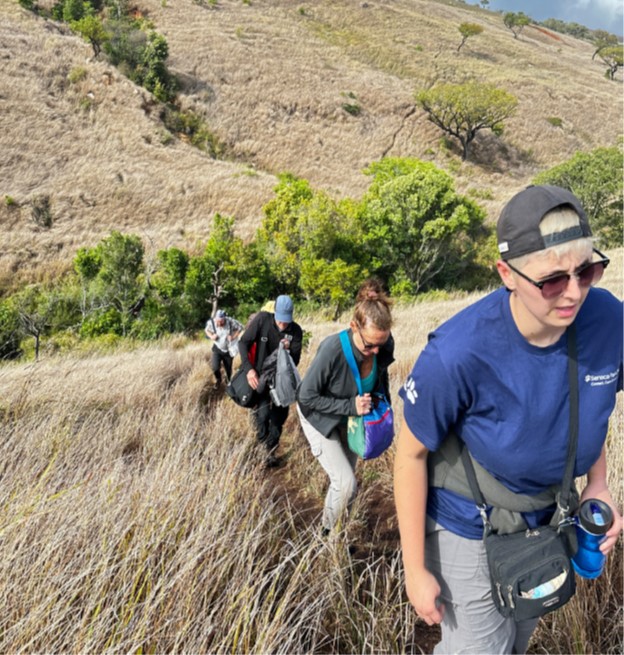
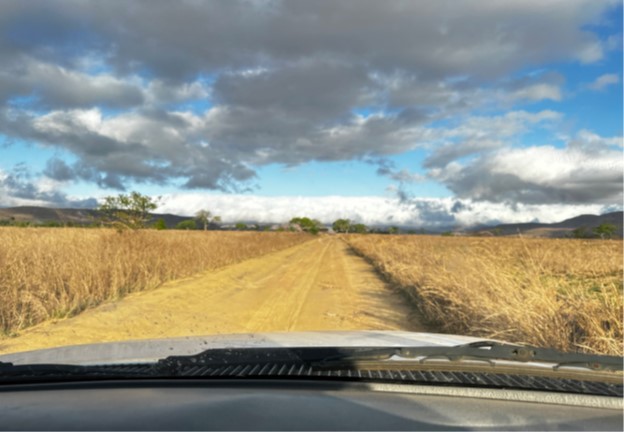
On the third day at Centre Valbio, the audiomoths are collected and we pack for our next day’s trip to Antananarivo. We wake and travel to grab the three audiomoths by the entrance and head out on our trip north. We stop in Antsirabe on the way back for lunch and the only bathroom break on a twelve-hour drive. We arrive back in Antananarivo shortly after sundown.
Final Day: We head to the market to buy vanilla and some souvenirs, and have a productive lunch meeting with the Chief of Mission for the US embassy. We learn from her about potential impacts of the upcoming Malagasy national election and discuss the importance of conserving areas like Ivohiboro. We were able to explain the reasons why zoo-based conservation is important for this region, and how we can support sustainable projects in this region long term.
We make the return flight, leaving at 1:15am and heading to Paris, then Toronto, then in my truck for the final drive back to the US. When we return, I will focus on the important task of organizing and backing up our
data, analyzing it, and seeing what we can learn from it. We have hundreds of gigs of audio data, 20 or so 360º videos, 20 GoPro videos, notes, and countless other photo files to go through to start telling the story of Ivohiboro. The next several weeks will be devoted to organizing, indexing, and starting the analysis.
Analysis of the collected data will allow us to narrate the story of Ivohiboro. The insights gained from this trip will guide our future conservation efforts and deepen our understanding of the complex interplay between
ecosystems, wildlife, and human communities. This journey reinforces the importance of zoo-based conservation projects and the need for sustainable, community-inclusive approaches to preserving biodiversity. We invite others to join us in building healthy forests and communities in Madagascar, a task that goes beyond mere tree planting to fostering resilient ecosystems and supporting local populations.
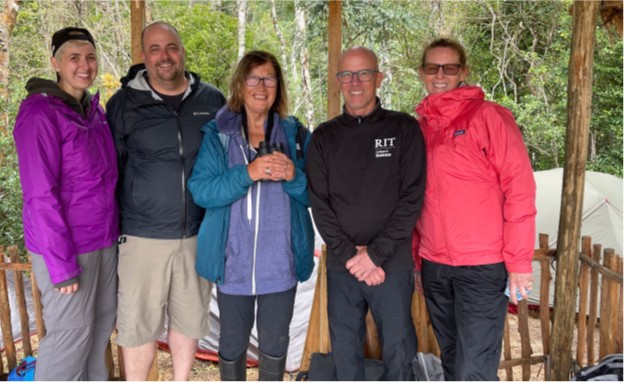
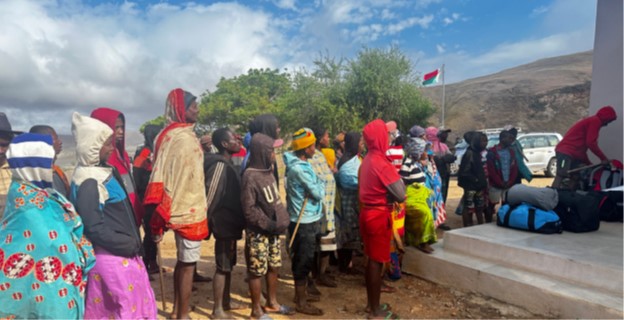
The post Into the Lost Rainforest appeared first on Seneca Park Zoo.


















